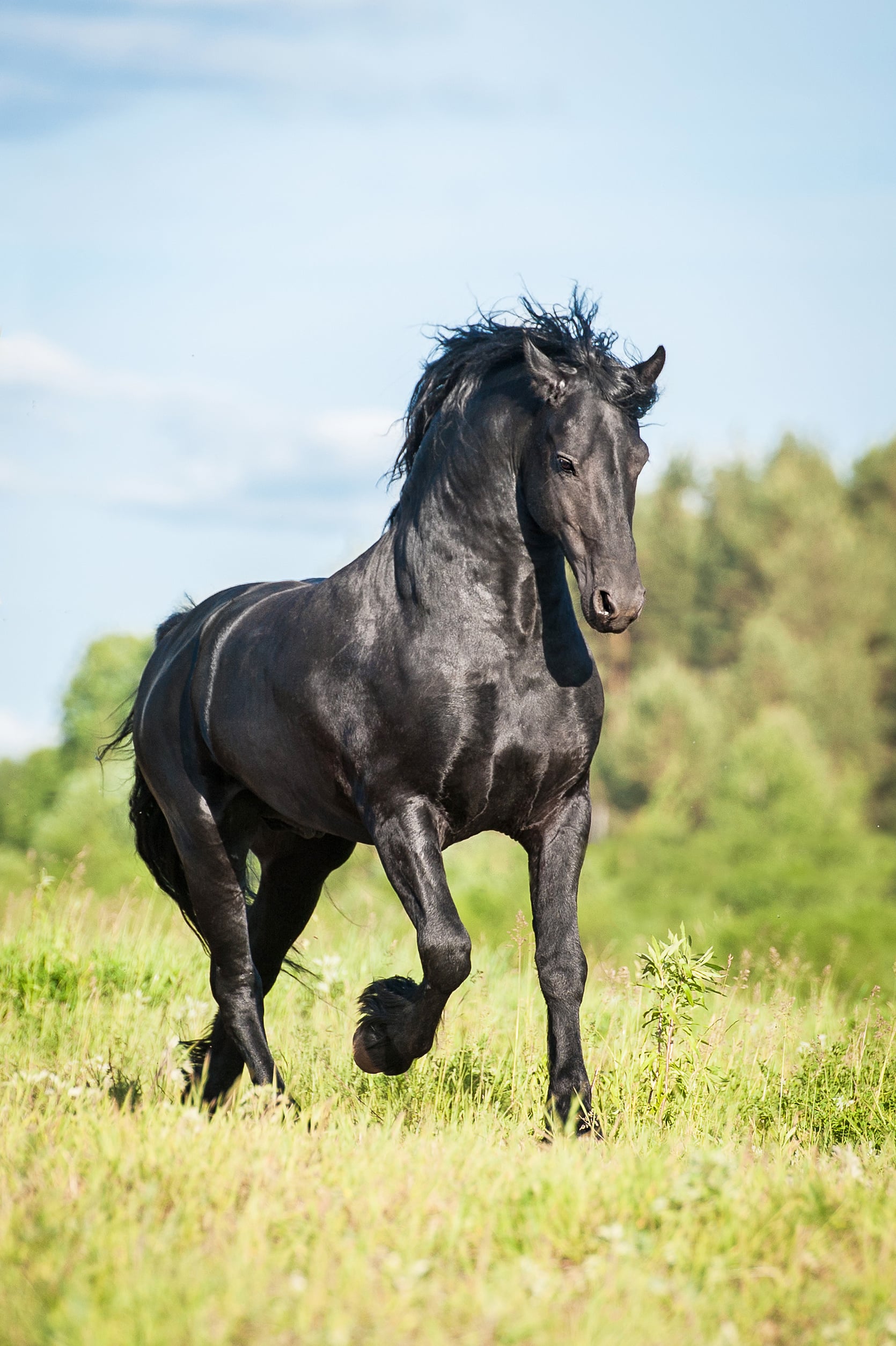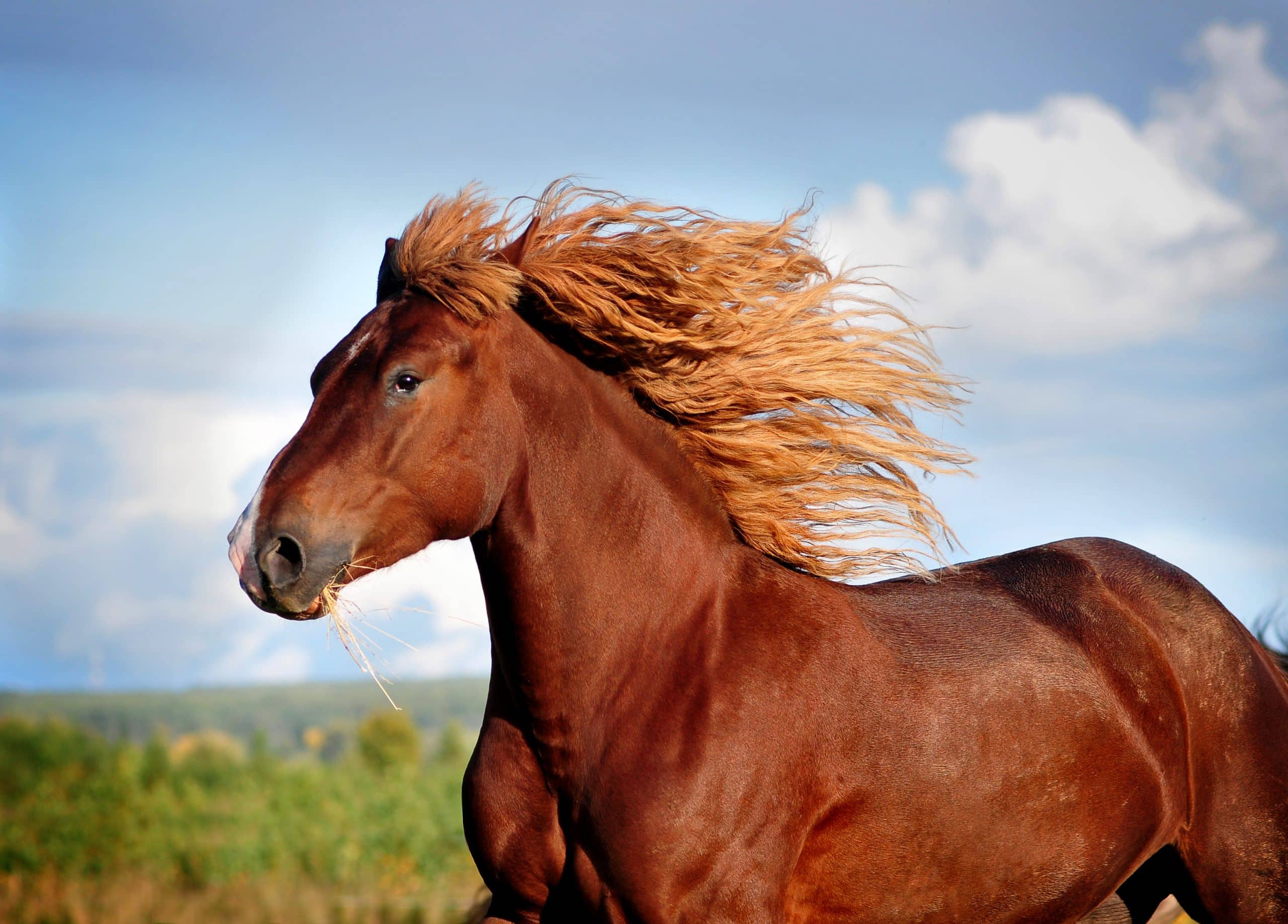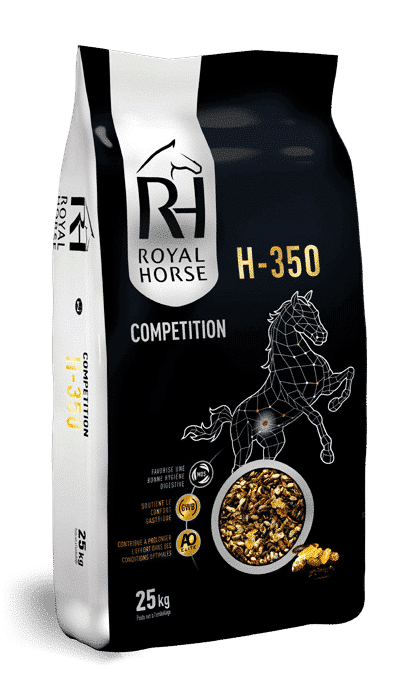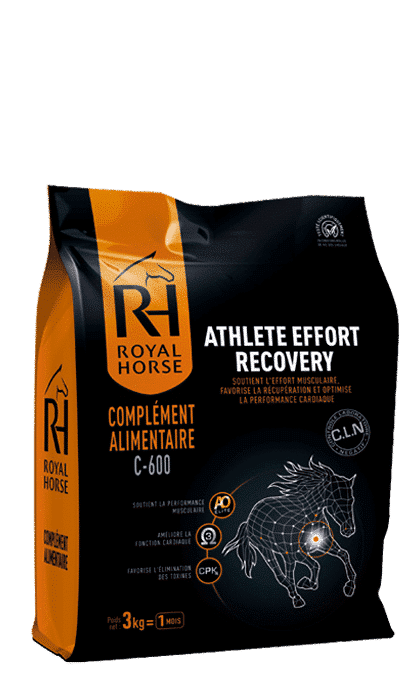There are several types of muscles in the horse: the cardiac muscle (myocardium), the smooth muscles (which manage breathing, digestion, and blood circulation) and the striated muscles which connect the different bone segments together. Throughout its growth, the horse will develop its different muscles. They can be composed of type I fibers, which allow for long-lasting efforts, or type II, which allow for short and intense efforts. For your horse to build muscle correctly and to be able to meet the performance requirements, its diet and physical activity must be adapted.
Why should I muscle my horse?
First, a properly muscled horse can better carry its rider, thanks to its abdominal muscles, a toned back and muscular legs. Depending on the breed of your horse, it will naturally have a particular musculature. For example, Iberian horses or quarter horses have prominent muscles. On the other hand, thoroughbred Arabian horses have much finer muscles. The work of muscle building will therefore not be the same for each horse.
Muscling a horse is a way to maintain its physical condition. It is also a way to improve its flexibility and to avoid the development of arthritis or pathologies.
What food to feed to develop your horse’s muscles?
For your horse’s muscles to develop properly, his diet must contain good quality proteins to provide energy. Good quality hay in sufficient quantity is essential. It can be supplemented with concentrated feed if necessary. To support the efforts required of your horse during (and after) physical activity, vitamins and amino acids also have a significant role to play. In particular:
- Magnesium, which prevents soreness,
- Vitamin B12, considered as the ” vitamin of the effort “.
- The amino acid L-Carnitine, which helps limit fatigue by reducing the production of lactic acid during exercise
- Antioxidants such as vitamin E and selenium, which protect the muscle cell from oxidative stress. They particularly help recovery after exercise.
Royal Horse has developed several feeds for horses specific to exercise in its H range. H350 (it comes in the form of a mix of cereal flakes, pellets and extruded) is formulated to cover the needs of horses subjected to intense and repeated efforts. It also contributes to the recovery, to the support of the gastric comfort and to a good digestive hygiene. Royal Horse also offers a range of food supplements. The C600 food supplement, for horses which must produce long and intense efforts. This supplement allows these horses to better eliminate toxins. It also allows for better heart function and faster recovery after exercise.
What exercises should be done to have a muscular horse?
As with humans, there are several types of exercise that will help build up your horse’s muscles. First, “cardio” type work. It will allow the horse to become more enduring and to maintain a constant effort. For example, trotting is a very good training to develop the endurance of your horse.
Secondly, the “muscle strengthening” type of training, which will allow you to target more precisely the muscles to be developed. In particular, the climbs and descents, the jumps, the transitions, and the backward movement are particularly good exercises of muscular reinforcement.
It is important to alternate the type of work in each session. Do not forget about flexibility in your training program. They are essential to maintaining your horse’s muscles.
To set up a good training program, several questions will guide your reflection. What do you want to achieve? Do you want to compete, or do you want to build up the muscle of a horse that is just coming out of convalescence? What are the physical characteristics of your horse? Your program must be realistic and allow time for your horse’s muscles to develop properly.

How to relieve your horse’s muscles after exercise?
In addition to diet and exercise, you can support your horse’s muscles through various treatments. For example, massages: to prepare for a competition or to relieve your horse after an intense effort, you can call on the services of equine masseurs, or learn some massage techniques. You can use different balms or creams to amplify the benefits of massage. Before a competition, warming balms will prepare the muscles, while after the competition, cooling balms will relax them and facilitate recovery.
Also, do not forget to structure your horse’s training sessions properly: start each work session with a good relaxation. This is essential to prepare your horse’s muscles and avoid injury. Finish your intense session (for example a cross-country) with active recovery. This consists of trotting for about ten minutes to bring down the horse’s heart rate and body temperature. It also helps the horse to eliminate the lactic acid contained in the muscles. You can also do passive recovery by walking at a walk pace for a good ten minutes. It allows your horse’s muscles to relax well.





